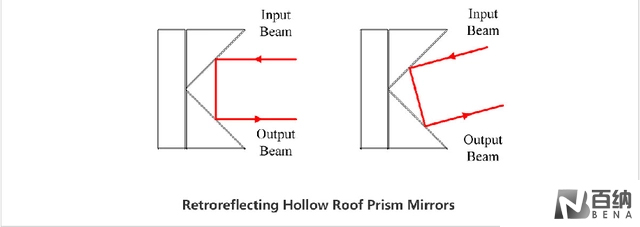I. Plane Mirrors
Dielectric Coated Mirrors: These mirrors have multiple layers of dielectric coatings on the optical element surface, which enhance reflectivity through interference in a specific wavelength band. Dielectric coating offers high reflectivity, can be used across a wide wavelength spectrum, do not absorb light, and are hard and resistant to damage. They are suitable for optical systems with multiple-wavelength lasers. However, these coatings are thick, angle-sensitive, and relatively expensive.
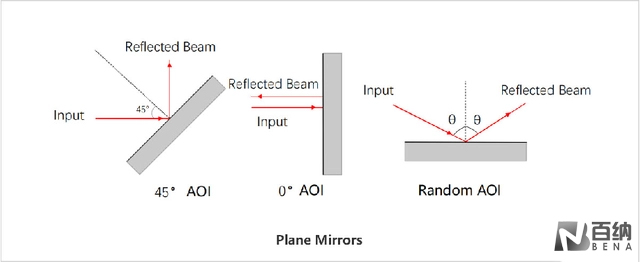
Laser Line Mirrors: The substrate material for laser line mirrors is UV fused silica, and the high-reflectivity coating on the surface is an Nd:YAG dielectric coating, applied using electron beam evaporation and ion-assisted deposition. Compared to K9 glass, UV fused silica has better homogeneity and a lower thermal expansion coefficient, making it particularly suitable for applications from UV to near-infrared wavelengths, high-power lasers, and imaging fields. Common working wavelengths for laser optical mirror is 266 nm, 355 nm, 532 nm, and 1064 nm, with incident angles of either 0-45° or 45°, and reflectivity exceeding 97%.
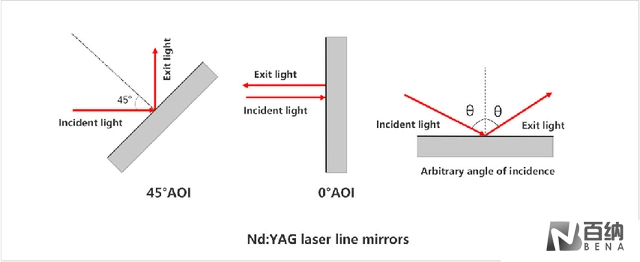
Ultrafast Mirrors: These mirrors use fused silica as the substrate material, with a high-reflectivity coating of low group delay dispersion dielectric layers, applied using ion beam sputtering (IBS). Fused silica has a lower thermal expansion coefficient and extremely high thermal shock stability, making it particularly suitable for high-power femtosecond pulse lasers and imaging fields. Common working wavelength ranges for ultrafast mirrors are 460 nm-590 nm, 700 nm-930 nm, 970 nm-1150 nm, and 1400 nm-1700 nm, with a 45° incident angle and reflectivity exceeding 99.5%.
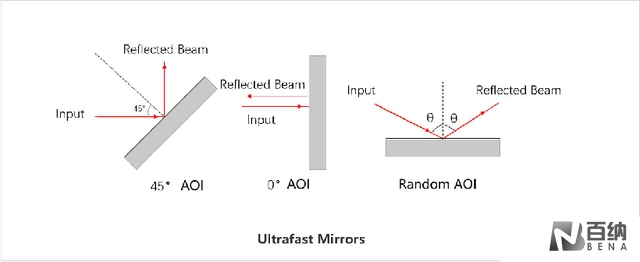
Super Mirrors: Super mirrors are made by coating multiple alternating layers of high and low refractive index dielectric materials on a UV fused silica substrate. By increasing the number of layers, the reflectivity can be enhanced, achieving reflectivity better than 99.99% at the design wavelength, making them suitable for optical systems requiring very high reflectivity.
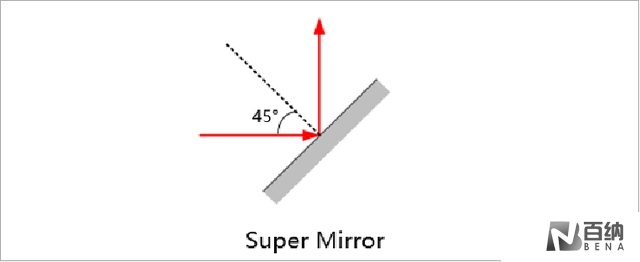
Metallic Coated Mirrors: These mirrors are ideal for deflecting light paths of broadband light sources, offering high reflectivity across a wide spectral range. However, metallic coatings can easily oxidize, discolor, or peel off in high humidity environments. Therefore, metallic mirror coatings typically have a protective layer of silicon dioxide on the surface to isolate the metallic layer from direct contact with air, preventing oxidation and maintaining optical performance.

II. Right-Angle Prism Mirrors
Right-angle prisms typically have anti-reflective coatings on the right-angle sides and reflective coatings on the hypotenuse. Due to their large contact area and typical angles of 45° and 90°, right-angle prisms are easier to mount and offer better stability and strength against mechanical stress compared to ordinary mirrors. They are the best choice for optical components in various devices and instruments.
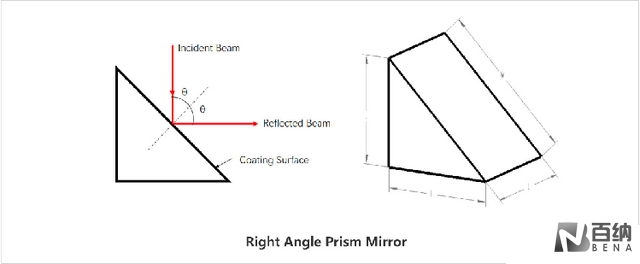
III. Off-Axis Parabolic Mirrors
Off axis parabolic mirror is surface mirrors with a reflective surface that is a section of a parent parabolic surface. These mirrors can focus parallel beams or collimate point light sources, and their off-axis design allows the focal point to be separated from the light path. Unlike lenses, off-axis parabolic mirrors do not produce spherical aberration or chromatic aberration, and they do not introduce phase delay or absorption loss, making them ideal for femtosecond pulse lasers.
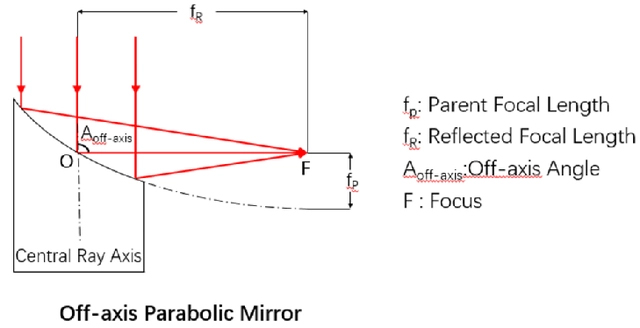
IV. Hollow Roof Prism Mirrors
Hollow roof prism mirrors consist of two right-angle prisms and a rectangular substrate made of Borofloat. Borofloat material offers extremely high surface flatness and excellent optical performance, with superior transmittance and very low fluorescence intensity across the entire spectral range. The hypotenuse of the right-angle prisms is coated with a silver layer protected by a metal layer, providing high reflectivity in the visible and near-infrared bands.
The hypotenuses of the two roof prisms are placed opposite each other, forming a dihedral angle of 90±10 arcseconds. Hollow roof prism mirrors can reflect light incident on the hypotenuse from outside the prism, with the reflected light remaining parallel to the incident light, avoiding beam interference and offering more precision than manually adjusting two mirrors.
